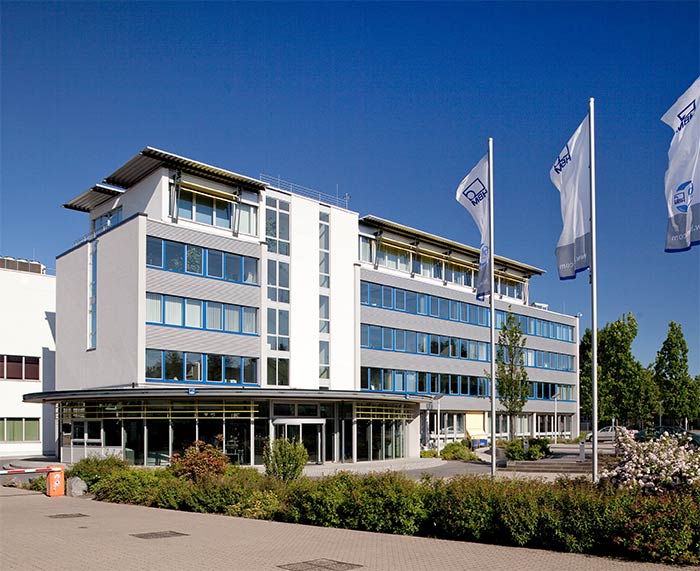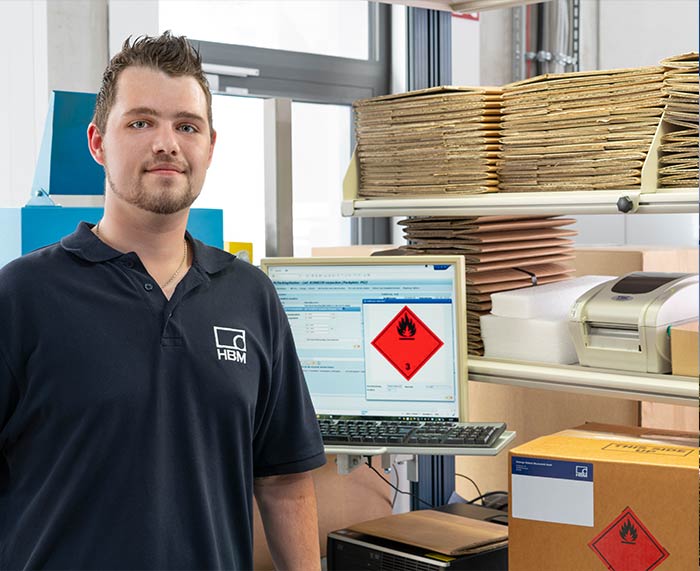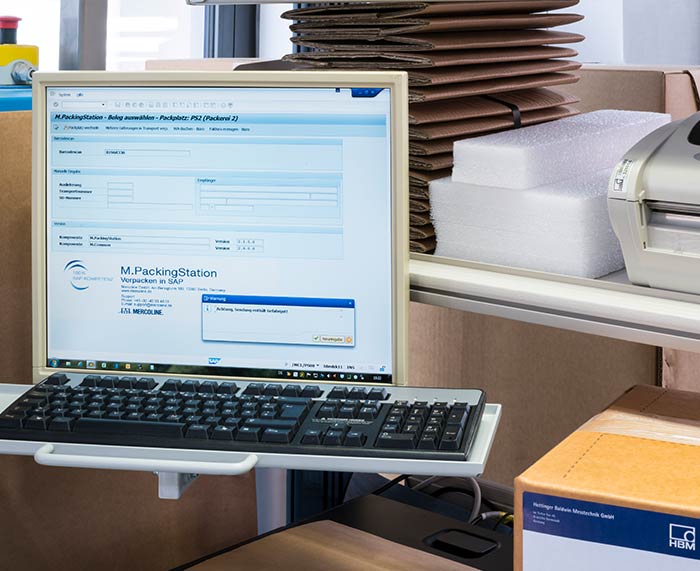The transport of hazardous goods is subject to a wide range of regulations too complex and time consuming for manual shipment processing. At the same time, conventional IT solutions have often proven too hefty for daily use. Now, measurement technology manufacturer HBM is using a streamlined IT solution integrated into its SAP system for the shipment of hazardous goods.
The transport of dangerous goods by road, rail or air is regulated in a number of dangerous goods ordinances. The shipper bears full responsibility for the classification, identification, packaging, marking and labelling as well as for the correct documentation of a dangerous goods shipment.
“Up until now, every packer has had a list of individual hazardous goods and special regulations regarding appropriate packaging, labelling stickers and shipping cartons. The sheer number of different regulations always means there’s a risk of declaring something incorrectly”, says HBM Shipping Team Director Köhler about why the company had been looking for IT support.

IT solution requirements
A shipping solution as an add-on for the SAP system


Connecting to CEP service providers
Shipments tracking via Track and Trace
„Durch die integrierten Schnittstellen zu den KEP-Dienstleistern können wir alle Sendungen im SAP-System jederzeit nachverfolgen. Zum einen können wir unsere Kunden proaktiv mit einer Trackingnummer über den Versandstatus informieren. Das erspart viele Anrufe. Durch die Trackingdaten wissen wir auch, wann eine Zustellung voraussichtlich erfolgen wird oder ob eine Sendung irgendwo stockt. Die Versandabteilung kann die Daten weltweit einsehen und Rückmeldungen an den Kunden geben“, fasst Daniel Köhler zusammen.
About Hottinger Baldwin Messtechnik GmbH (HBM)
As a global market leader for technology HBM offers products for the entire measurement chain, ranging from virtual to physical tests and inspections. HBM’s product range consists of sensors, amplifiers, measurement data logging systems and testing and analysis software. HBM additionally offers worldwide resources for the design, development and production of customized sensors. The company has some 1,800 employees around the world and large production and development facilities in Darmstadt, Germany; Suzhou, China and Marlborough, Massachusetts. HBM is a subsidiary of the Spectris Group, a leading supplier of measurement instruments and controls designed to increase productivity. www.hbm.com